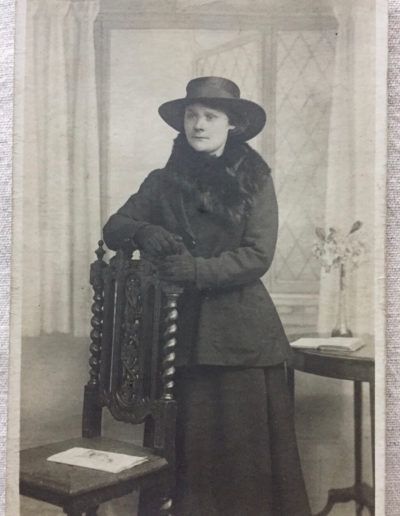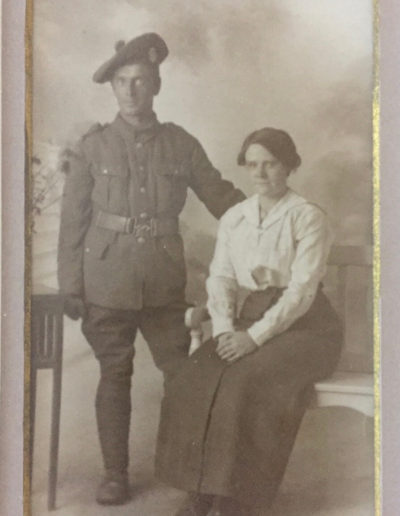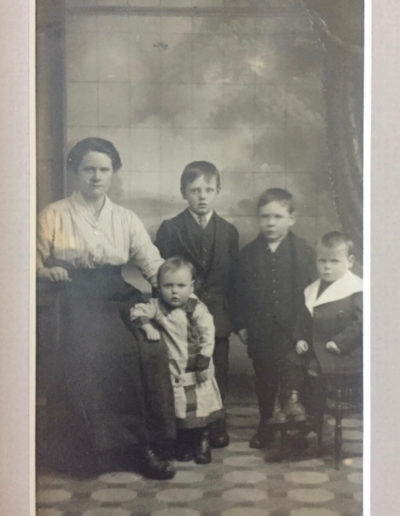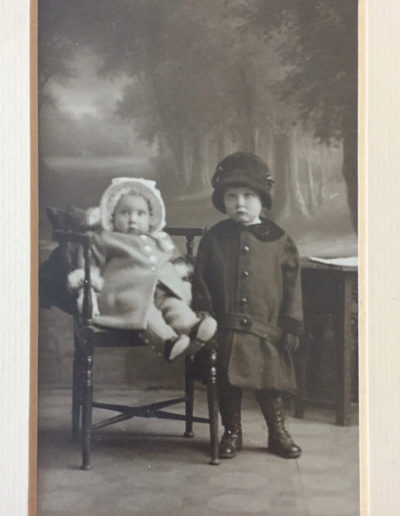Toilet Paper and Courage
The date was March 14th, 2020 and there were still lots of rolls of toilet paper in New Zealand as I spoke with my sister over the phone. Here in USA the panic buying of toilet paper was starting over the threat of a “stay in place” due to the rising numbers of people with the COVID19 virus. We started to chat and reminisce about our Granny in Scotland – outside toilet, shared by two families up a short flight of stairs. We took our own toilet roll with us but there was always an “emergency “ supply inside. This consisted of squares of newspaper hung up on a nail with thick twine.
I started looking up pictures and articles on the internet to augment the memories I had of times gone by. Some of the pictures included in this page are from multiple sources and are used solely to give you a little visual help.
So now with that in mind and with what is going on in the world I will take you back to when my granny, Sarah Love McCord, was born in 1896 in Dundee Scotland. This was a time that horses and carts were seen delivering beer and coal. The milkman would also come along with milk in bottles and deliver it to the door. Cars were just being made and most people walked to the store or took a tram. Born in the area known as The Hilltown Sarah, my granny, met and married William Anderson in 1912 at the age of sixteen. When I knew my gran and grandad they lived in two rooms on the first floor of a tenement at 210 Hilltown The tenements usually had stores on the ground floor and you accessed the house through what you would call a close – a long passageway between the stores – and then climbed a flight of stairs to the house. There was a long concrete platform leading to the house and it also extended to the right where another family lived. In Scotland these were called “the platties” The 1911 census revealed that about half of the population lived in either one – or two-room houses in Scotland. I remember Granny Anderson having a gas cooker but back in those days she probably had a coal fire/cooker.There was one sink in the kitchen/living room/ dining room. There was only cold water and they would boil pots of water and wash their children in a large tin bath in front of the coal fire. Their bed was in a recess in the living room with curtains at the front. My granny’s sister and her husband lived on the floor above which was reached by an enclosed spiral staircase. Half way up was the toilet – a flush toilet with a high cistern and long chain with a wooden pull. There was a piece of string attached to enable the children to flush the toilet. Not a place you may have wanted to go to in the middle of a cold night so therefore there was always a chamber pot – or potty as we called it – under the bed for emergencies.
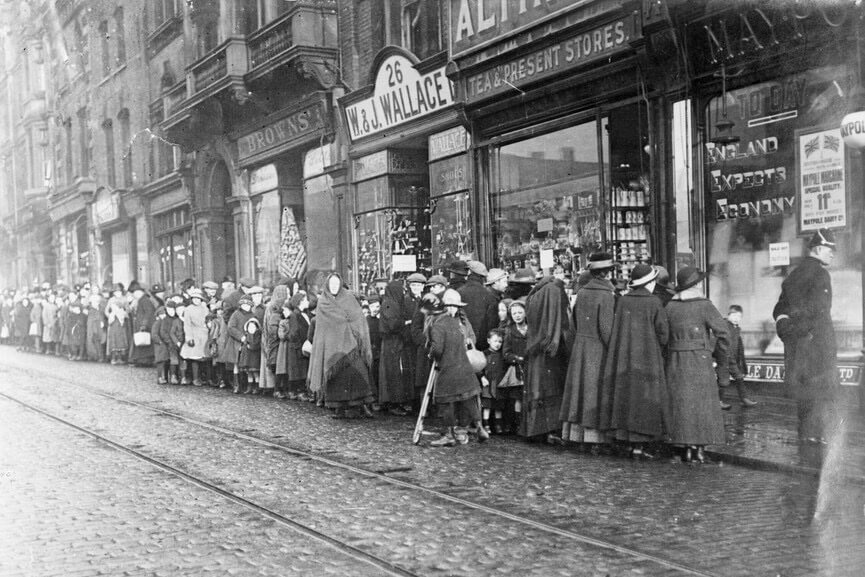
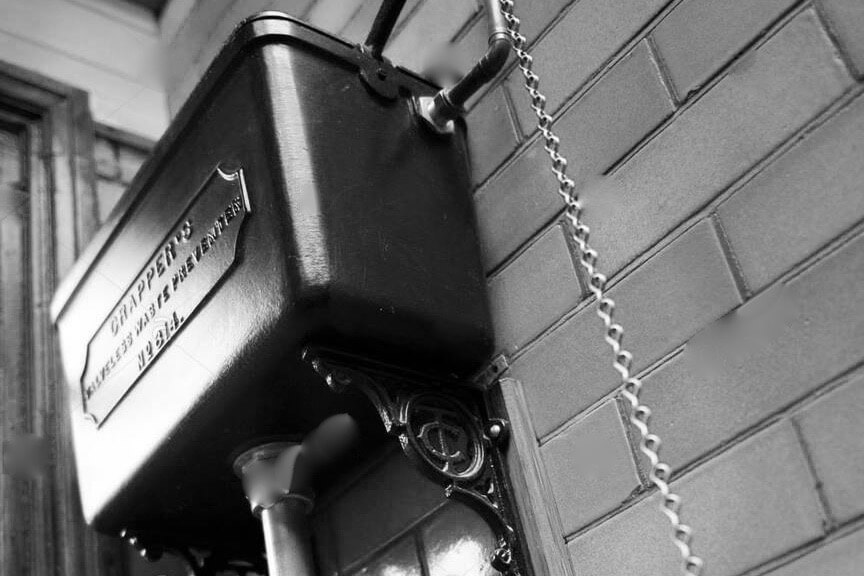
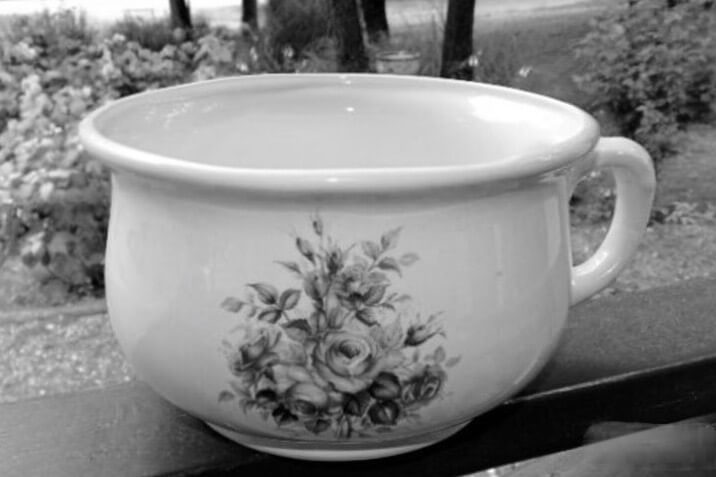
Granny Anderson had two children and one on the way when her husband and brothers went off to fight in WW1. She was left on her own to take care of the children and along with other wives in the same situation they formed a close knit community. They all reached out and helped each other – especially when a new baby was born. In those early years they did not have the luxury of a “lying in hospital” where women of a higher class would rest for four weeks after the birth of their children. They were attended by midwifes and friends and relatives would help with the children. In the over-crowded tenements of urban Scotland chronic complaints and poor nutrition were widespread. Fortunately this was a good tenement and although they did not have a lot of money the children were always clean, well fed and also had some Sunday best clothes. I am amazed as I look at my old family photos at how well dressed they looked when they went to have their pictures taken. Many young Scottish men were killed during WW1 but granddad and granny’s brothers were spared. The war ended and the men returned but in 1918 the world was hit by the Spanish Flu with 500 million people infected and 50 million deaths. In Scotland it was estimated that about 9,000 died with the Flu and was most virulent amongst young adults. Some say that soldiers returning home unwittingly brought it with them. A lot of lives lost in a population of about 4.5 million
The year of 1920 was and remains a record year for births in Scotland: almost 137,000 children were registered, about 30% more than the average of the previous five years. This was the year that my mum – Elizabeth – was born – January 14th 1920. Gran also had seven other children in six pregnancies. Twins that died and two still births. She may also have lost a son in early childhood. Her last child was born in 1930. Yes seven living children in two rooms – one sink, an outside toilet and no washing machine. The women would use their baby pram and take the clothes to the local “steamie” or washhouse where they would wash and wring the clothes then bring them home to put out on the clothes lines outside their windows. The lines were attached to large poles and were on pulleys. Gran would stand on the cupboard at the side of the sink and open the top window and lean out and hang up the washing with the wooden pegs. In this cupboard at the side of the sink was where the coal was kept. It was delivered the coal man who carried the 112lb bags up the stairs for the fire. If the weather was bad the clothes would have to be dried in the house on the “clothes horse” that hung from the ceiling. Considering that there were no disposable diapers(nappies in Scotland) this was a real challenge drying the terry nappies.
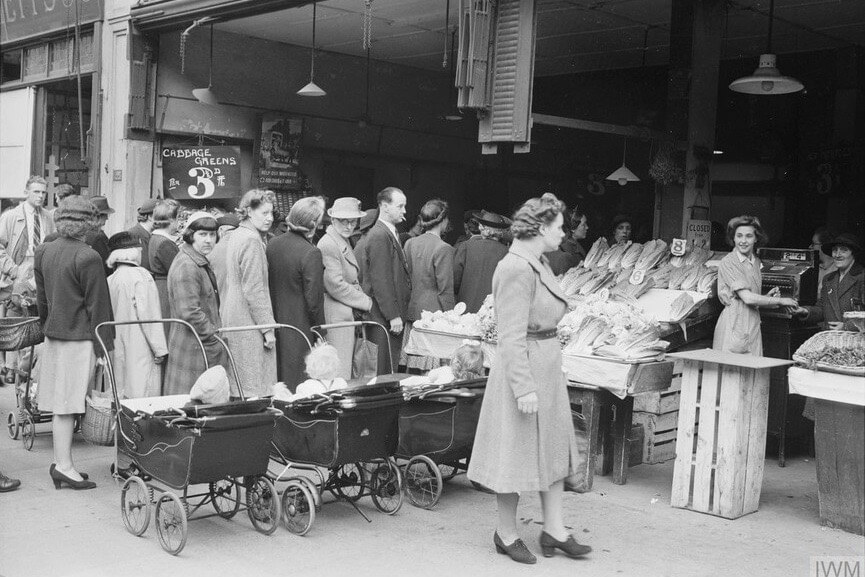
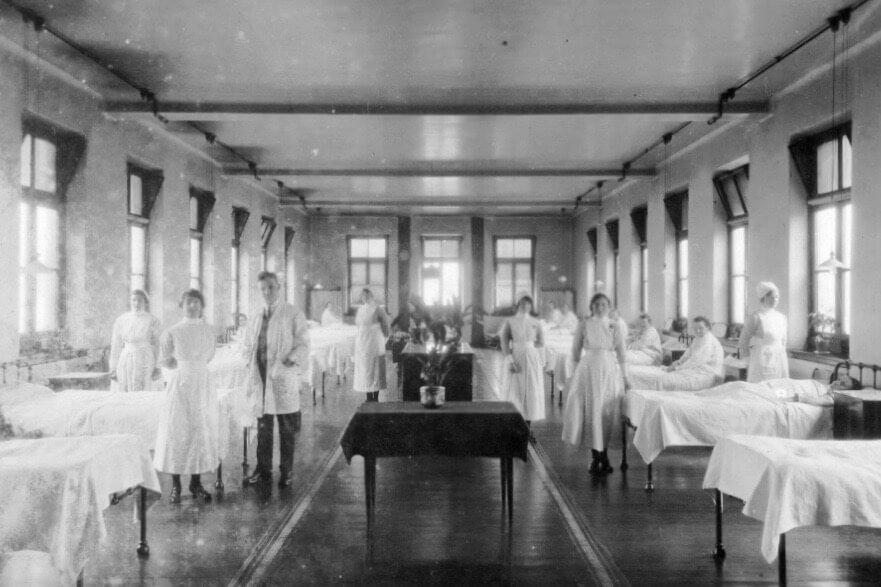
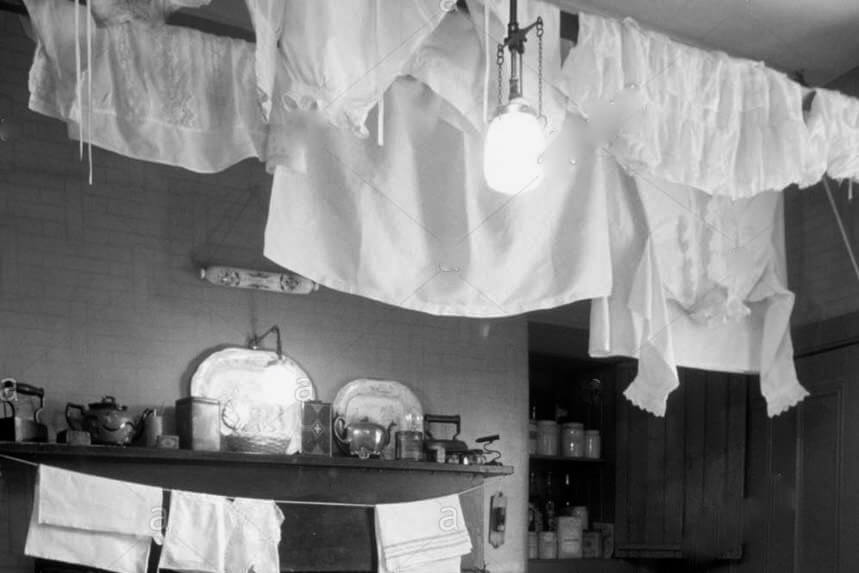
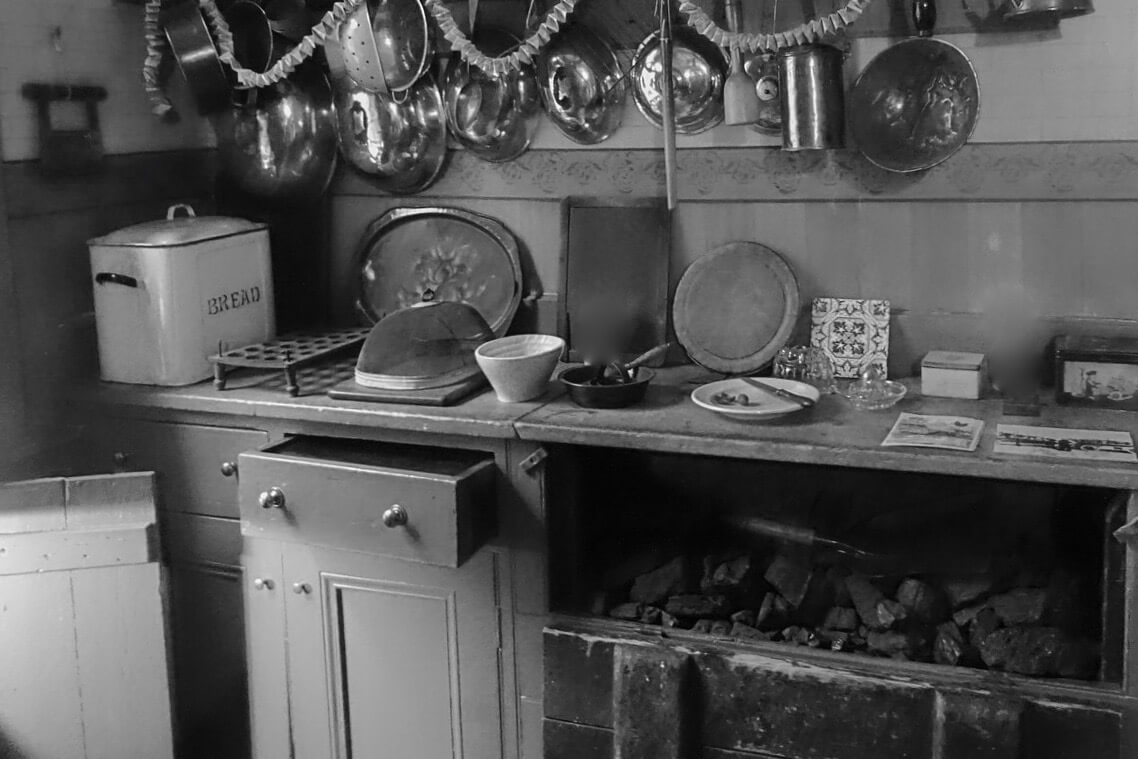
Granddad worked hard as a laborer for the town and to save money he would repair all the children shoes with pieces of scrap leather. I have in my possession the last that granddad used- I wonder how many shoes he repaired on it. The children were getting bigger and in fact Will, Dave and Sam were married. About this time they managed to get another small room where Tom stayed. Along came the depression and granny had her last child in 1930. Dundee was famous for three things Jute, Jam and Journalist. People still read the paper, put jam on their bread and the linoleum works still needed jute. The family got by but in Glasgow – which was much more industrial – the poverty was really bad and the tenements there went into disrepair. Gran would send my mum to the baker to get “aulders” which meant second day bread which was much cheaper. Granddad had a small plot of ground – or allotment – about a mile away from where they lived in which he grew vegetables. During the war this was called a Victory Garden.
Now we are in 1939 and WW2 begins and my uncle Will,Dave and Sam went off to war. Mum was 19 Jean 17 Tom 13 and Rettie 9. Mum and Jean were called to be in the land army and also work in munitions factories. Rationing was started and everyone was given a ration book.This enabled them to go into stores easier and not have to line up as granny would have to do in WW1. Everyone had the same amount. The girls slept in the “big room” and gran and grandad still slept in the alcove in the kitchen. Tom had the small room to himself now and when he was old enough he joined the merchant navy. Mum met our dad William Henry Warner during the war but that is another story. Uncle Will did not come back from the war but died in a field hospital in France leaving behind a wife and two daughters and a grieving mother. Gran was and always will be a real hero to us and especially to my sister Sarah who is named after her. Her life was hard and had its tragedies but she was always full of courage. When I was eight years old granny was losing weight and not very well but did not want to go to the doctor. She died of stomach cancer in 1956 at the age of 60.
May we all have her courage at this time when things seem so dark and if we run out of toilet paper remember my granny and cut up the newspaper !!!
